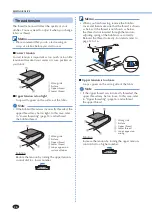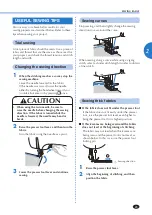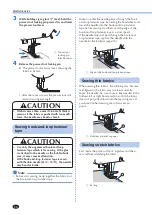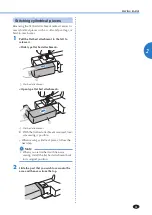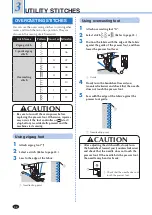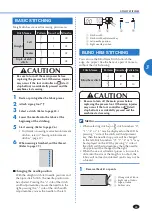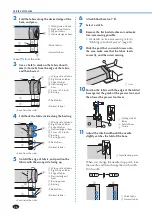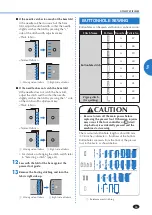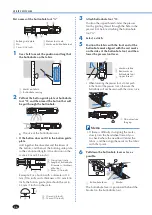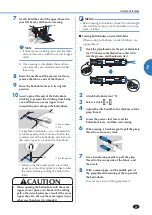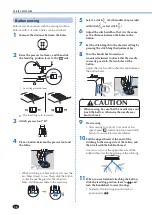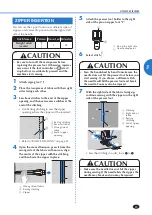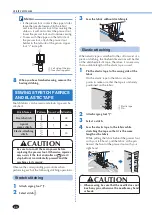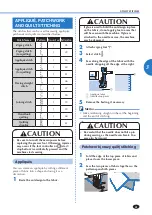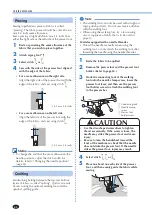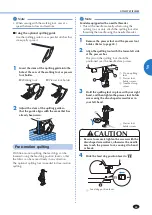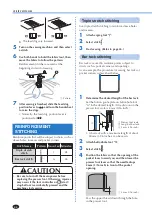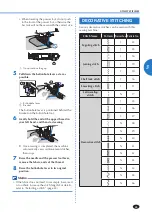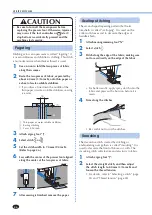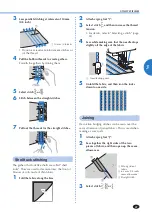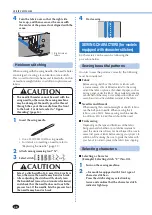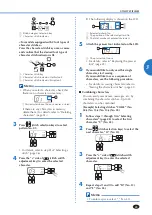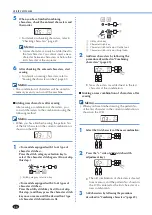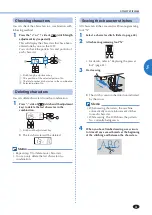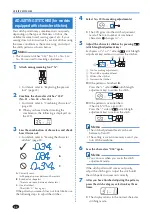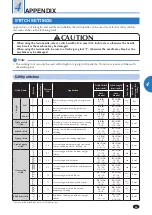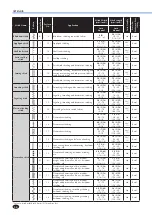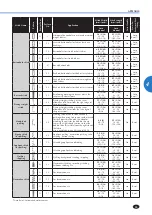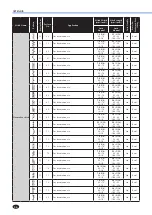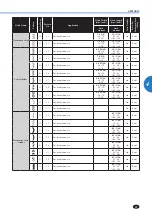
UTILITY STITCHES
42
Piecing
Sewing together two pieces of fabric is called
“piecing”. The fabric pieces should be cut with a 6.5
mm (1/4 inch) seam allowance.
Sew a piecing straight stitch 6.5 mm (1/4 inch) from
either the right side or the left side of the presser foot.
1
Baste or pin along the seam allowance of the
fabric that you wish to piece together.
2
Attach zigzag foot “J”.
3
Select stitch or .
4
Sew with the side of the presser foot aligned
with the edge of the fabric.
• For a seam allowance on the right side
Align the right side of the presser foot with the
edge of the fabric, and sew using stitch .
1
1
6.5 mm (1/4 inch)
• For a seam allowance on the left side
Align the left side of the presser foot with the
edge of the fabric, and sew using stitch .
1
1
6.5 mm (1/4 inch)
Memo
• To change the width of the seam allowance (the
needle position), adjust the stitch width. For
details, refer to “Changing the needle position”
(page 33).
Quilting
Sandwiching batting between the top and bottom
layers of fabric is called “quilting”. Quilts can easily
be sewn using the optional walking foot and the
optional quilting guide.
Note
• The walking foot can only be used with straight or
zigzag stitch patterns. Do not sew reverse stitches
with the walking foot.
• When using the walking foot, try a test sewing
on a scrap piece of fabric that is to be used in
project.
Models equipped with a needle threader
• Thread the needle manually when using the
walking foot, or only attach the walking foot after
threading the needle using the needle threader.
1
Baste the fabric to be quilted.
2
Remove the presser foot and the presser foot
holder. (Refer to page 24.)
3
Hook the connecting fork of the walking
foot onto the needle clamp screw, lower the
presser foot lever, and then use the presser
foot holder screw to attach the walking foot
to the presser bar.
1
Connecting fork
2
Needle clamp
screw
3
Presser foot
holder screw
CAUTION
• Use the disc-shaped screwdriver to tighten
the screw securely. If the screw is loose, the
needle may strike the presser foot and cause
injury.
• Be sure to turn the handwheel toward the
front of the machine to check that the needle
does not strike the presser foot. If the needle
strikes the presser foot, injury may result.
4
Select stitch , or .
5
Place one hand on each side of the presser
foot, and then evenly guide the fabric while
sewing.

